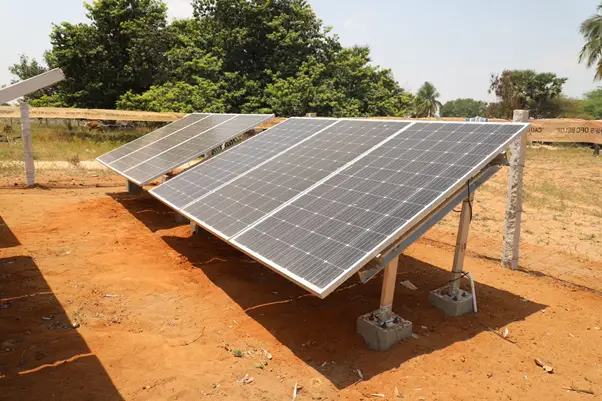Photovoltaic power generation boasts the largest amount of power generation among renewable energies other than hydroelectric power generation introduced in India. Renewable energy, including solar power generation, has the great advantage of being able to generate electricity as domestic energy without the need for specific fuels such as fossil fuels. This can be mentioned not only in terms of supplying domestic electricity, but also in household units. Although there are some limitations such as solar panels don’t work efficiently on rainy and cloudy days, the benefits as merits are great, and if it becomes widespread, it will become one of the foundations that support our lives in the short and long term.
Photovoltaic power generation uses solar modules (solar panels), the size of which depends on the design of the house, but can be mounted on the roof. Therefore, the electricity used at home can be covered by the electricity generated by solar power without relying on all the electricity supplied from the power plant, and surplus electricity may be generated. It is also possible to earn income by selling this to an electric power company. Not only can you reduce your utility bills at home, but you also get the benefit of earning income.
What is the sale of solar power?
Photovoltaic power is generated from the time the sun rises to the time it sets, as long as the sun hits the solar cells. Therefore, the more modules that have solar cells connected to them, the more power they can generate. With the spread of solar power generation, the number of ordinary households that generate electricity on the roof is increasing, but the electricity generated during the day is mainly consumed as electricity for homes. However, in some households, there is a surplus of electricity that cannot be consumed. The feed-in tariff (FIT) system is a system that purchases such surplus electricity.
For some reason, my home has a higher estimate even though it has the same installed capacity. First, the more installation surfaces, the higher the solar system price in India. It depends on the installed capacity, but in the case of a hipped roof.
- It takes time and effort
- More members
- Scaffolding may increase
The most cost effective and reasonable priced solar panel system is only provided by LoomSolar. Where 1kW Grid connected Solar AC module comes under 80,000 INR, the 10kW Grid Connected Solar AC Module Would cost you 8,00,000 INR.
What is the feed-in tariff (FIT) system?
Formally called the “feed-in tariff system for renewable energy,” this system is a system in which the government guarantees that electric power companies will purchase electricity generated from renewable energy at a pre decided price for a specific time period. Although solar power generation is becoming more widespread and costs are decreasing, it has the disadvantage of incurring initial costs and running costs. However, with this system, there is a possibility that the cost can be recovered if the generated power is purchased as much as possible. In selling electricity, the purchase cost is paid to the household that sold the surplus electricity from the electric power company. It is us who use electricity to bear this cost.
Since the surplus electricity purchased is included in the electricity we use, renewable energy power generation promotion levies (renewable energy levies) are collected from electricity users in accordance with the FIT system. The payment of the purchase cost of surplus electricity is covered.




